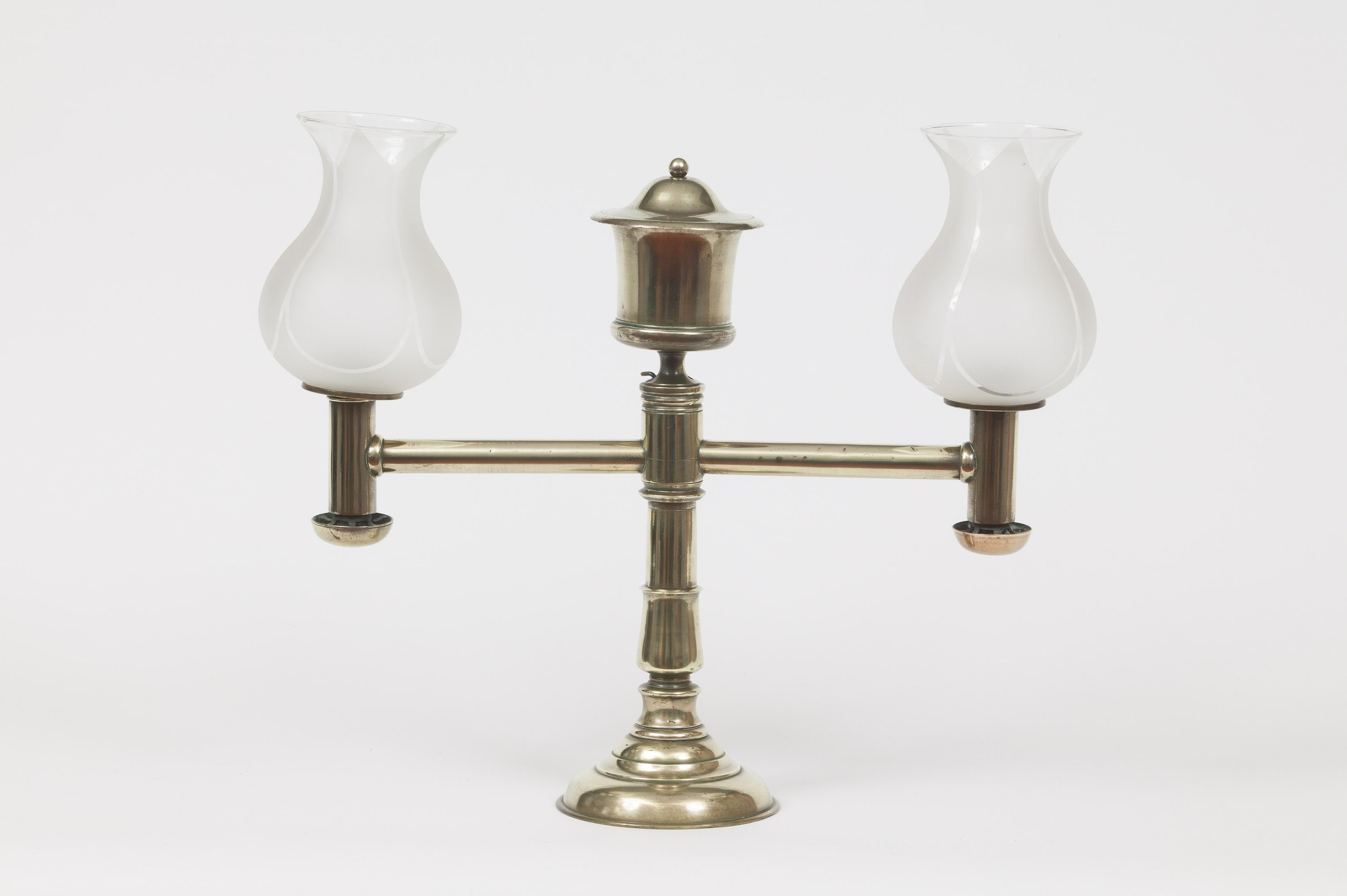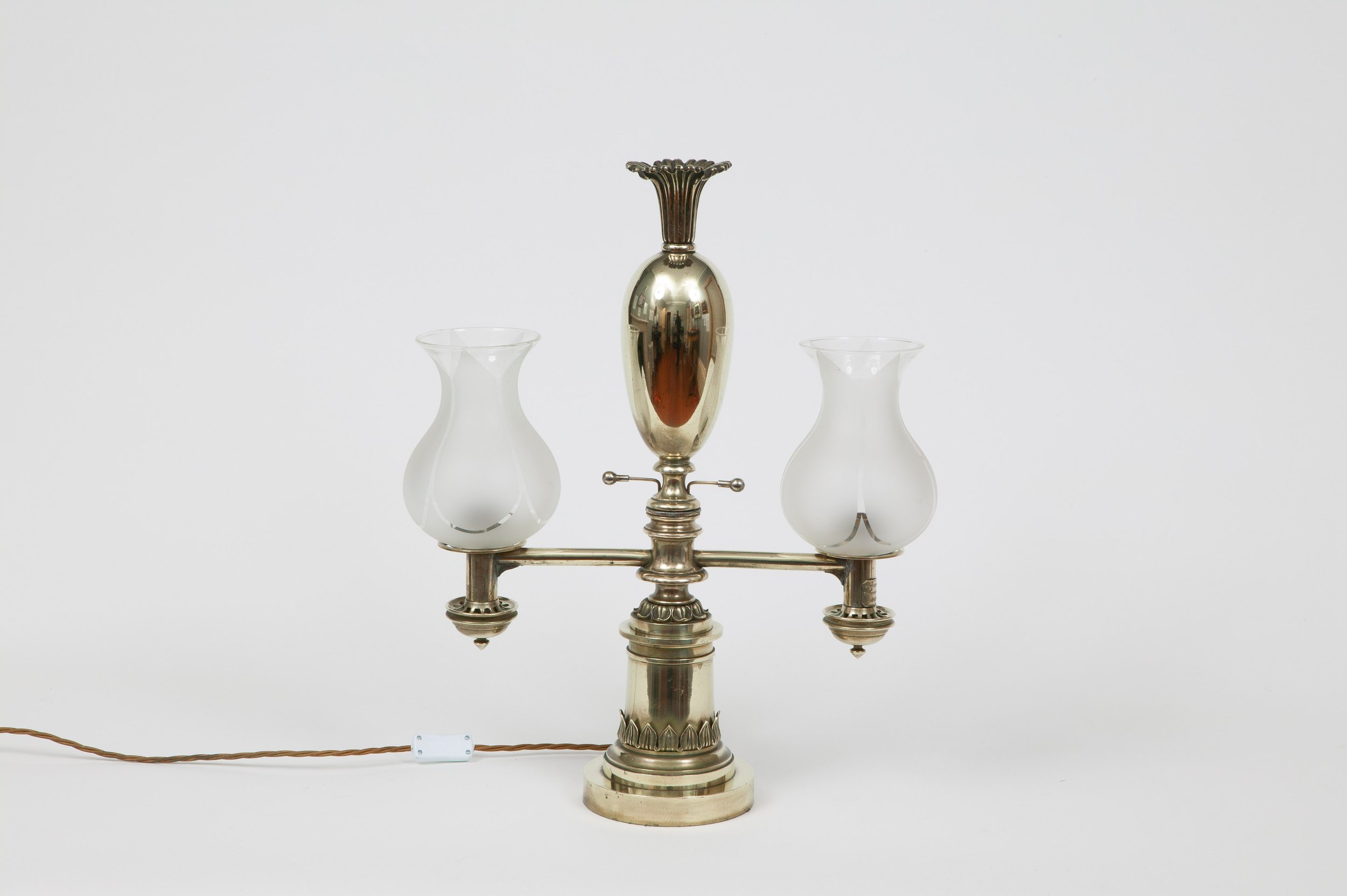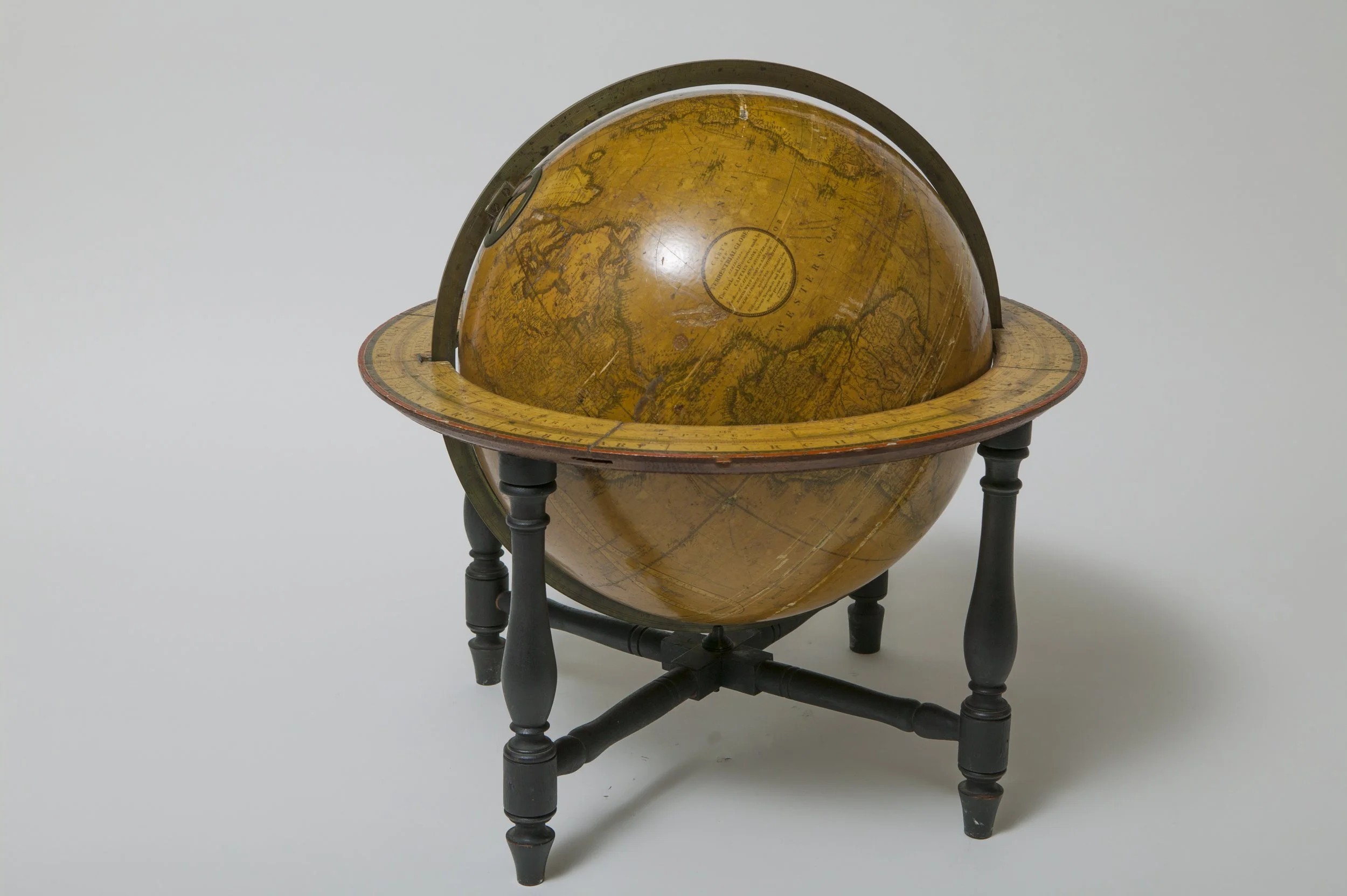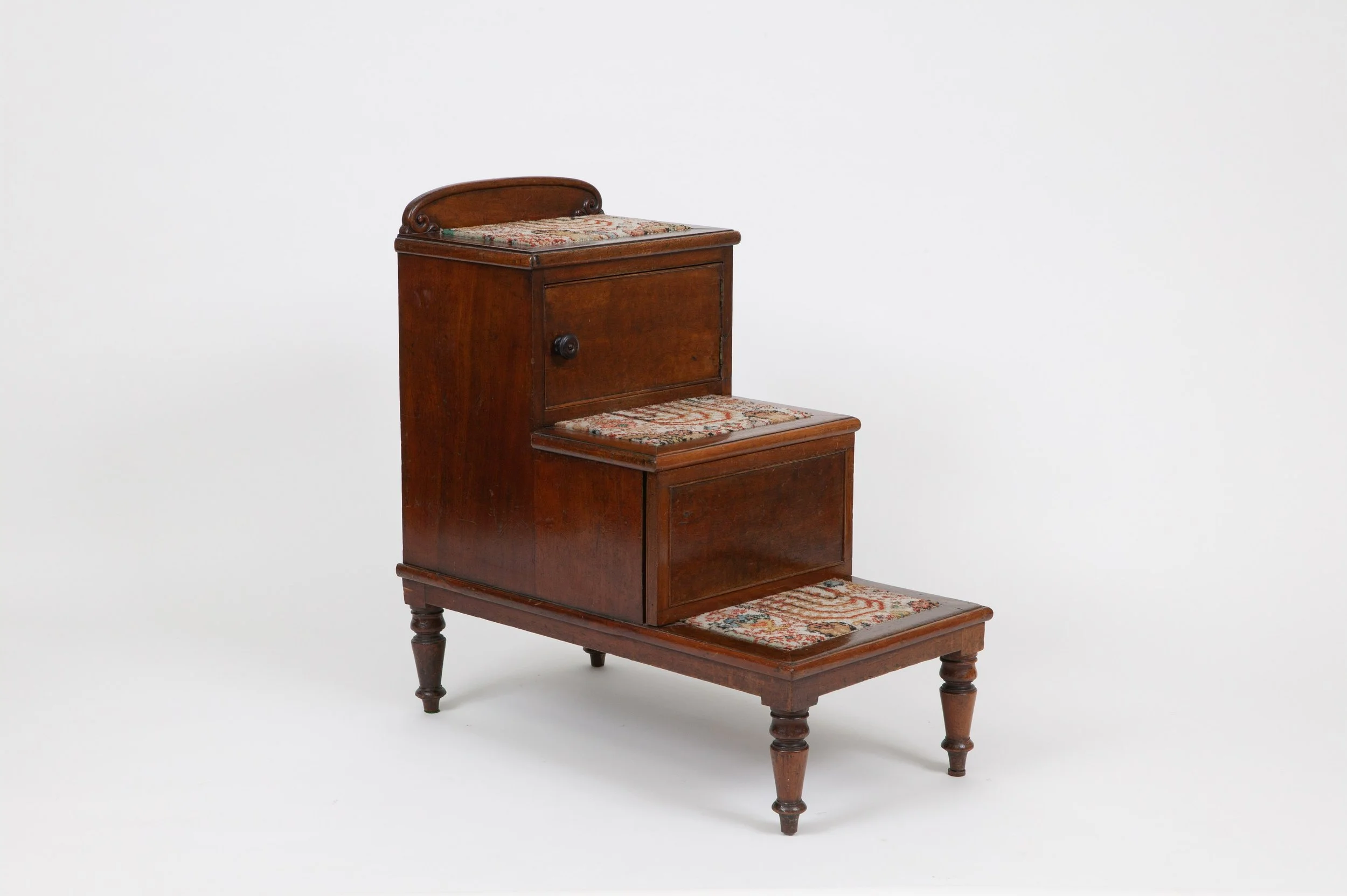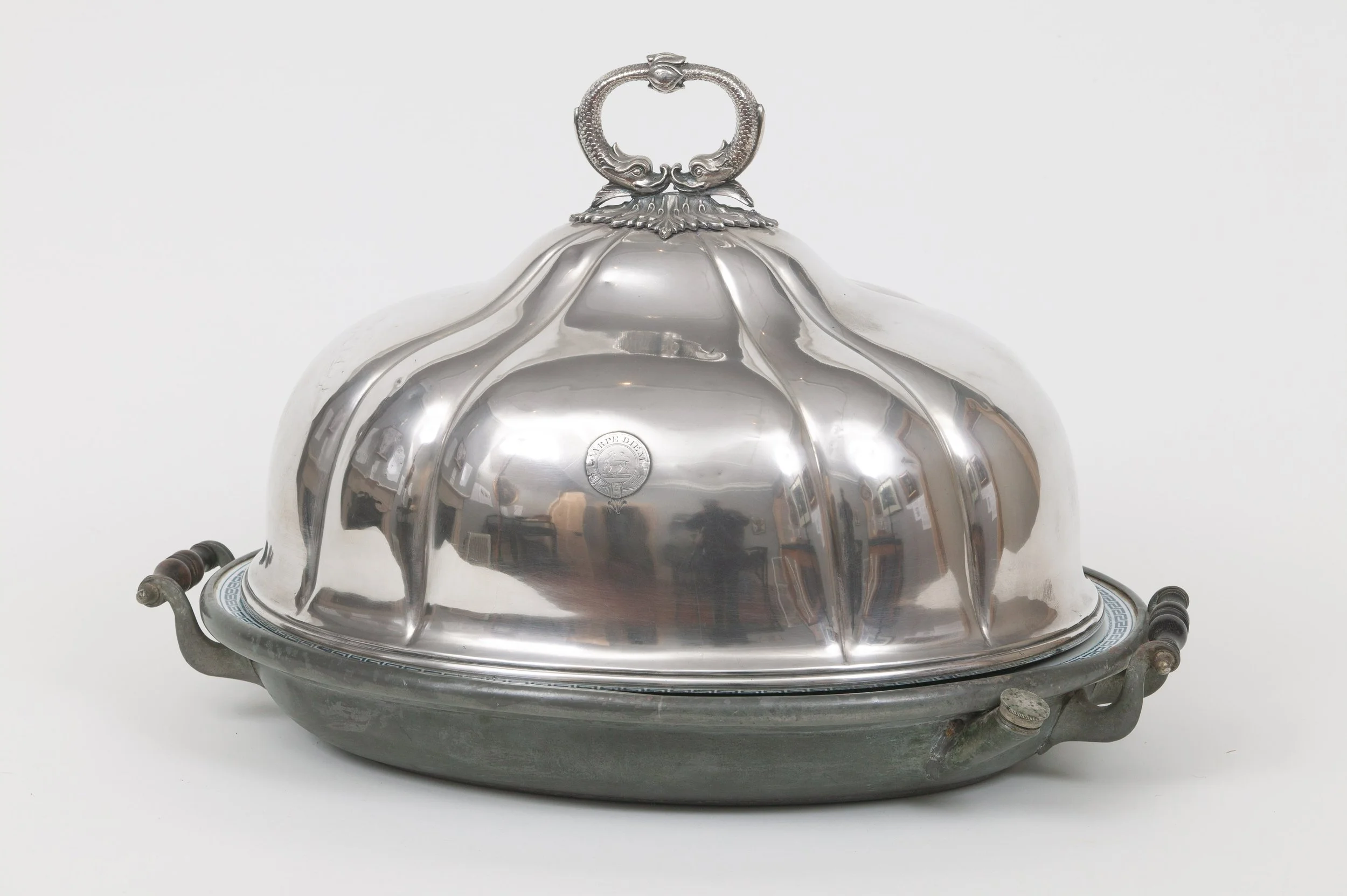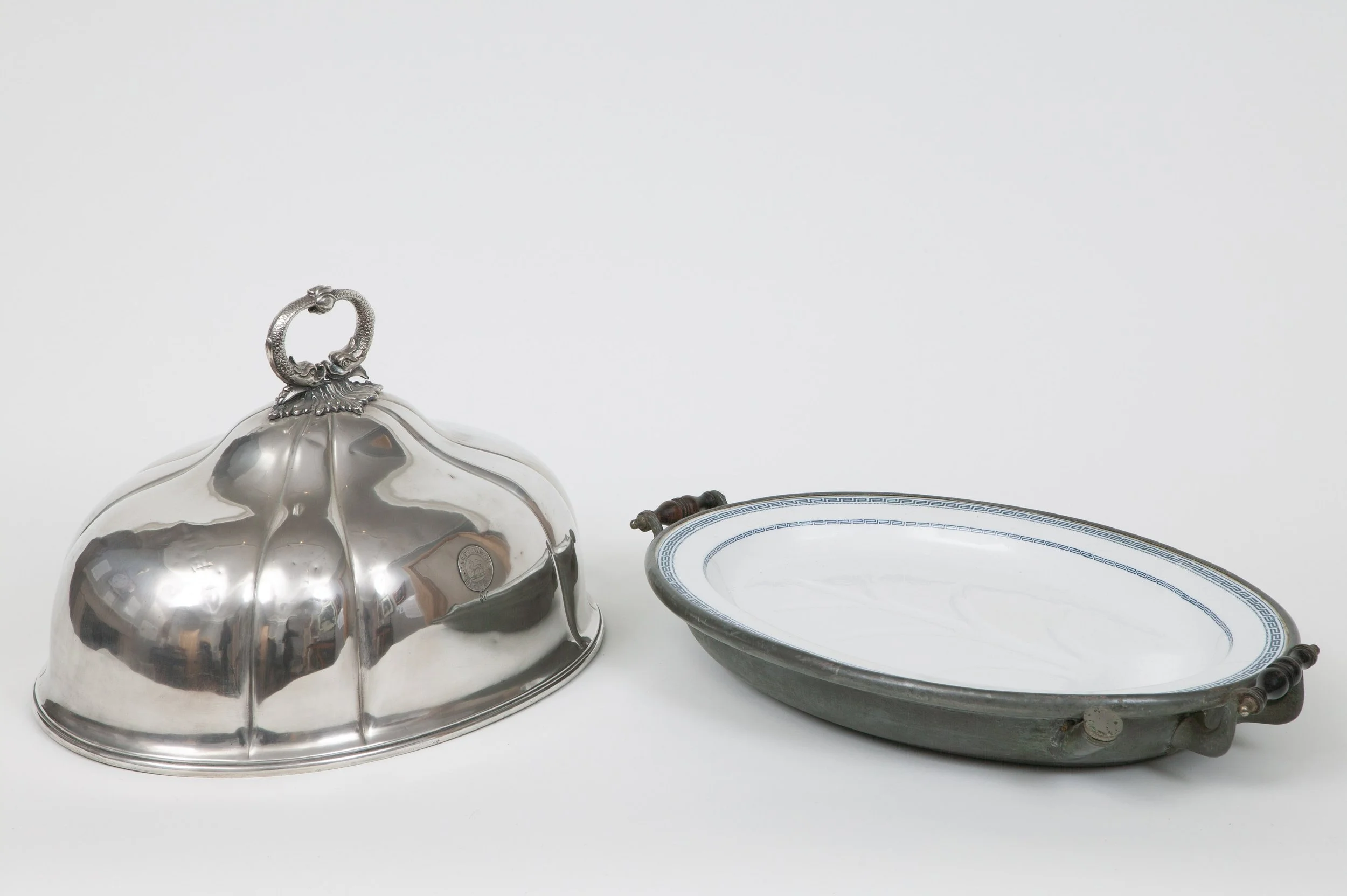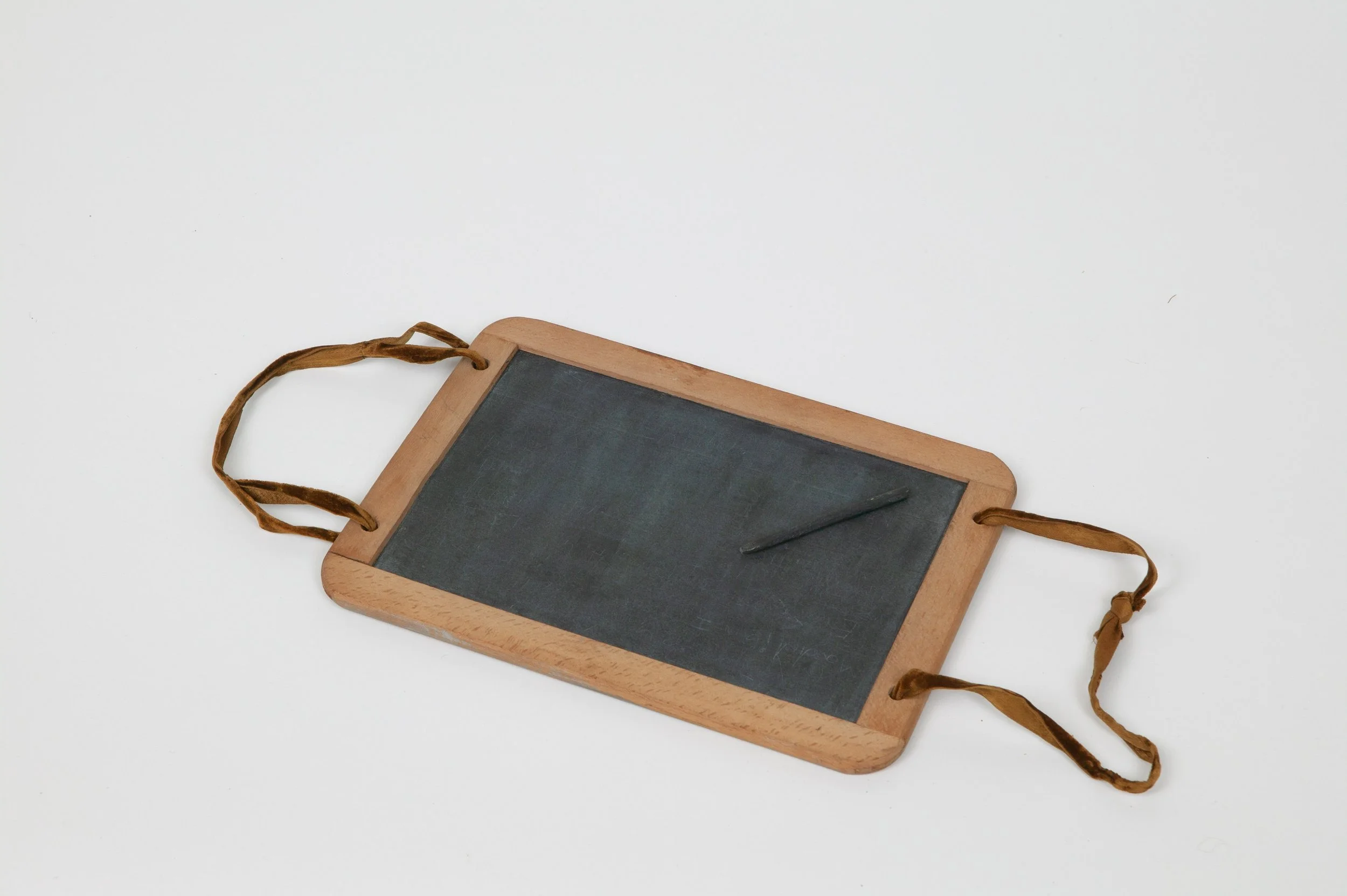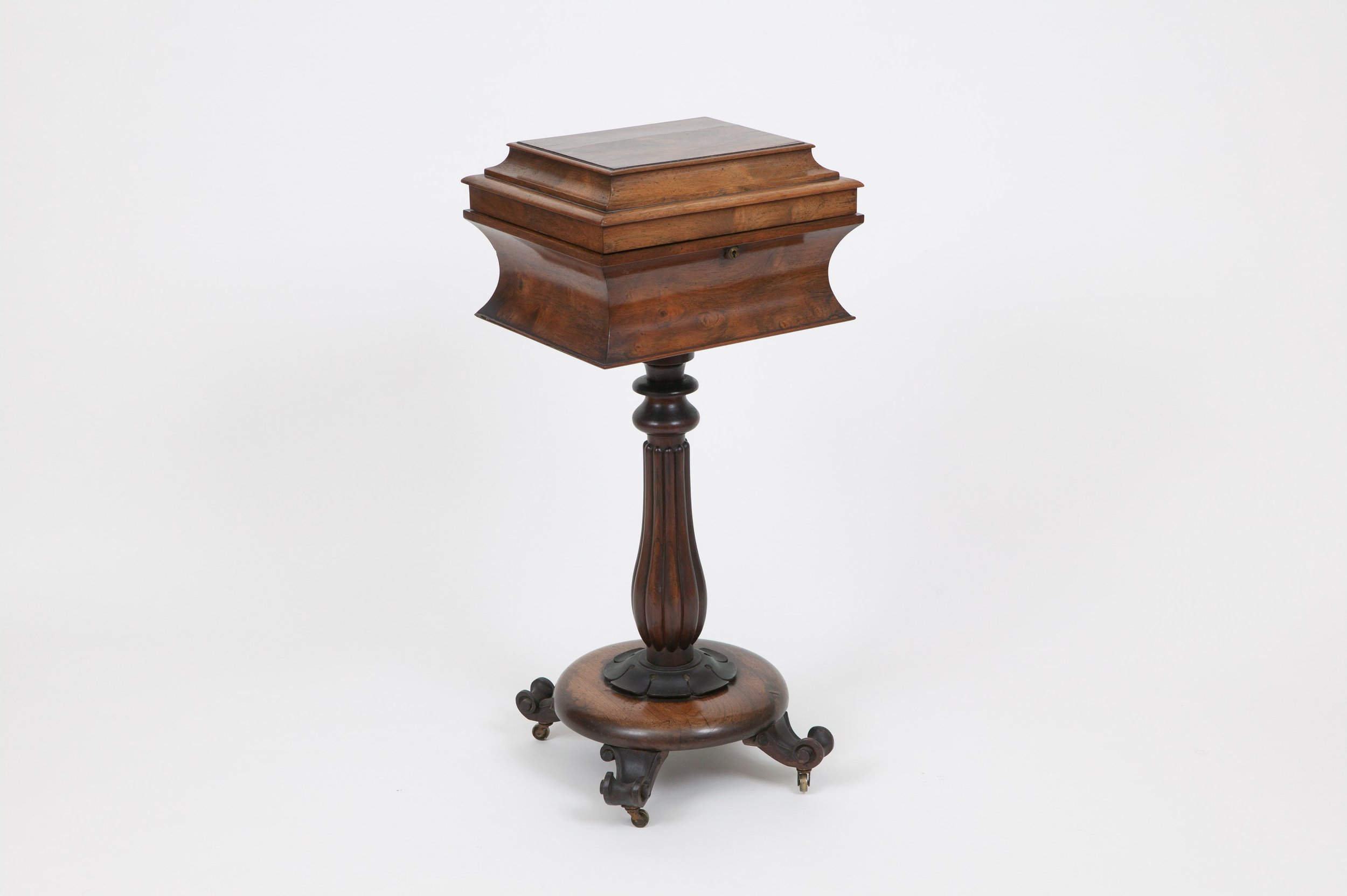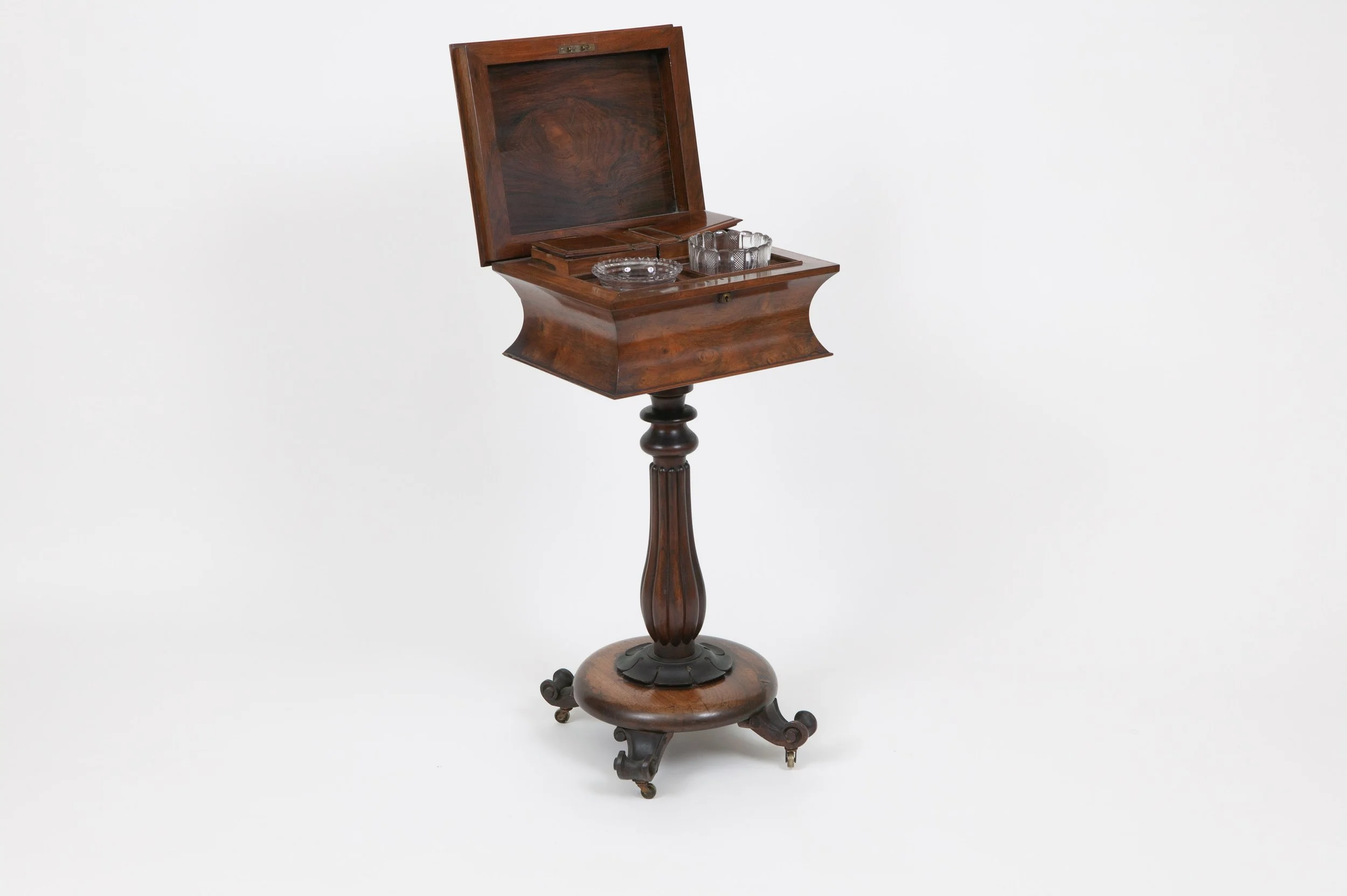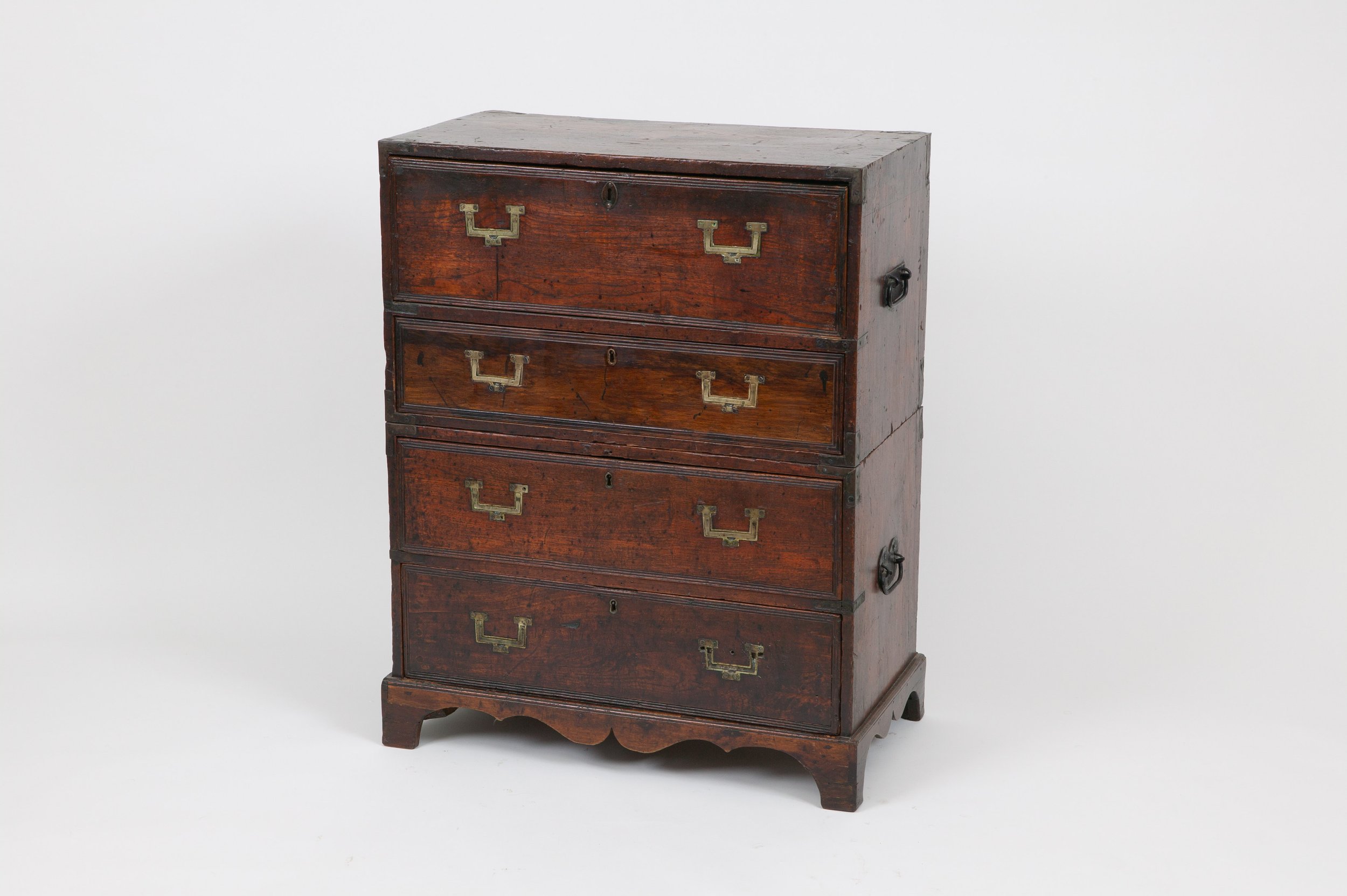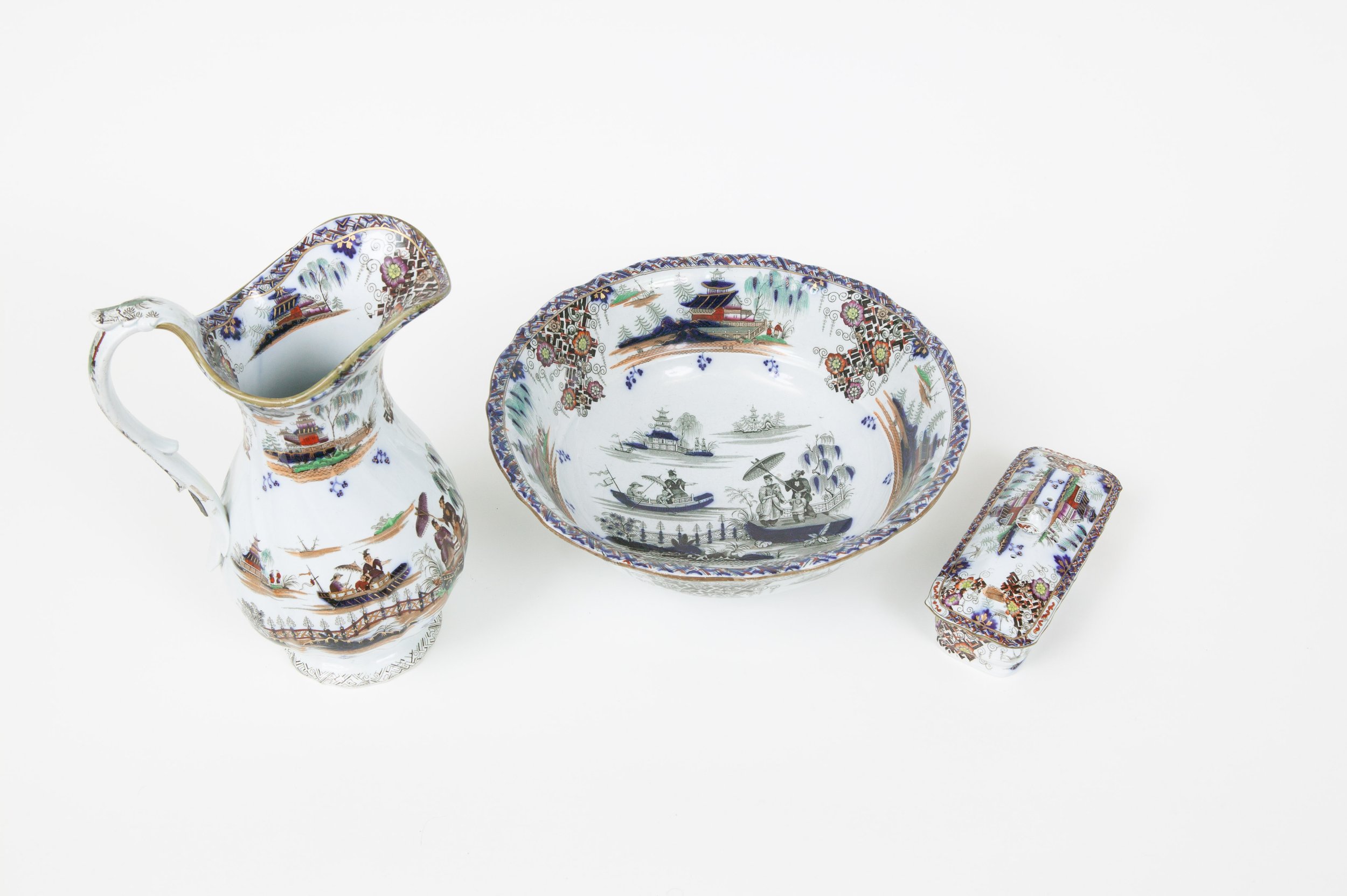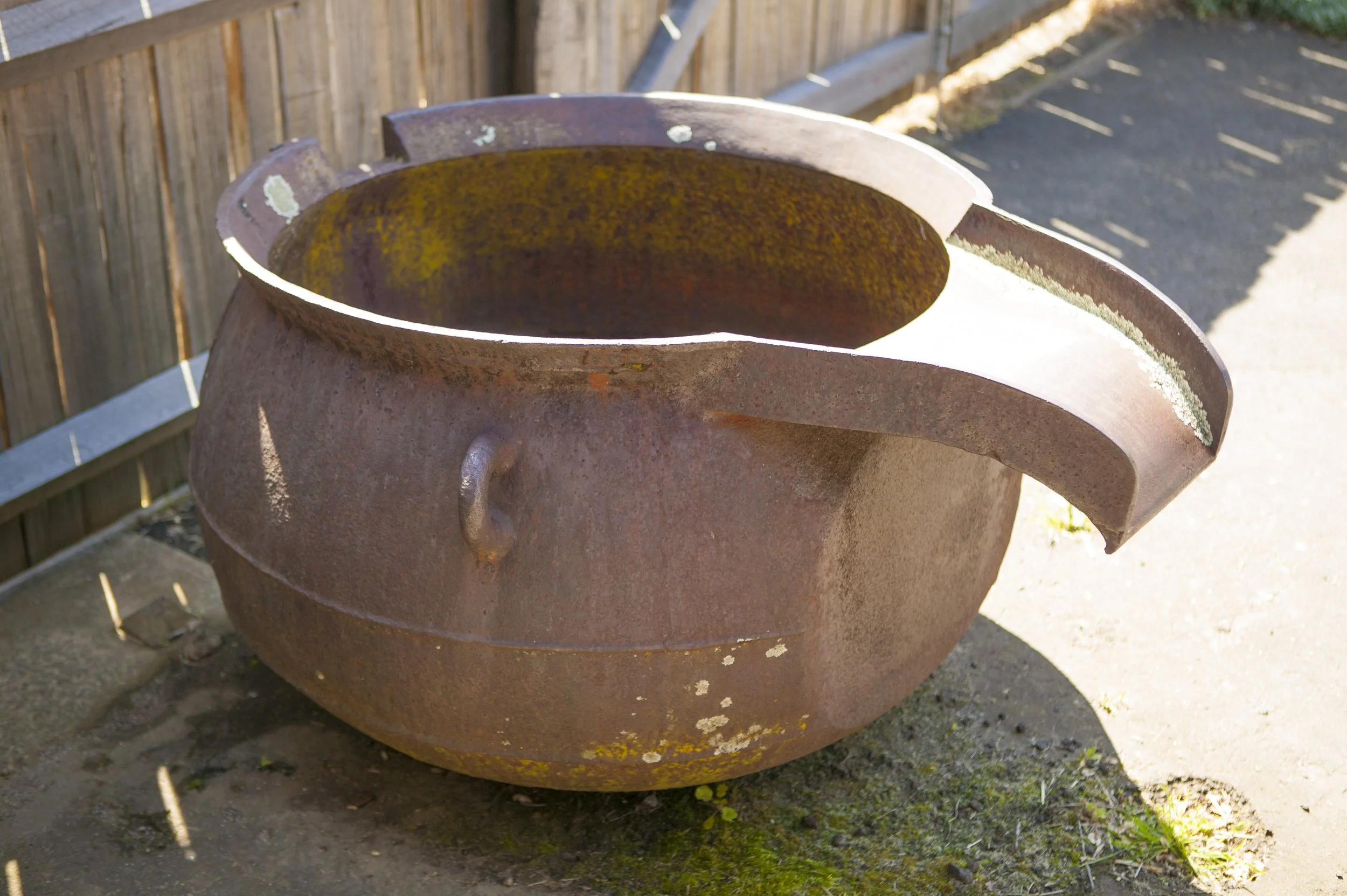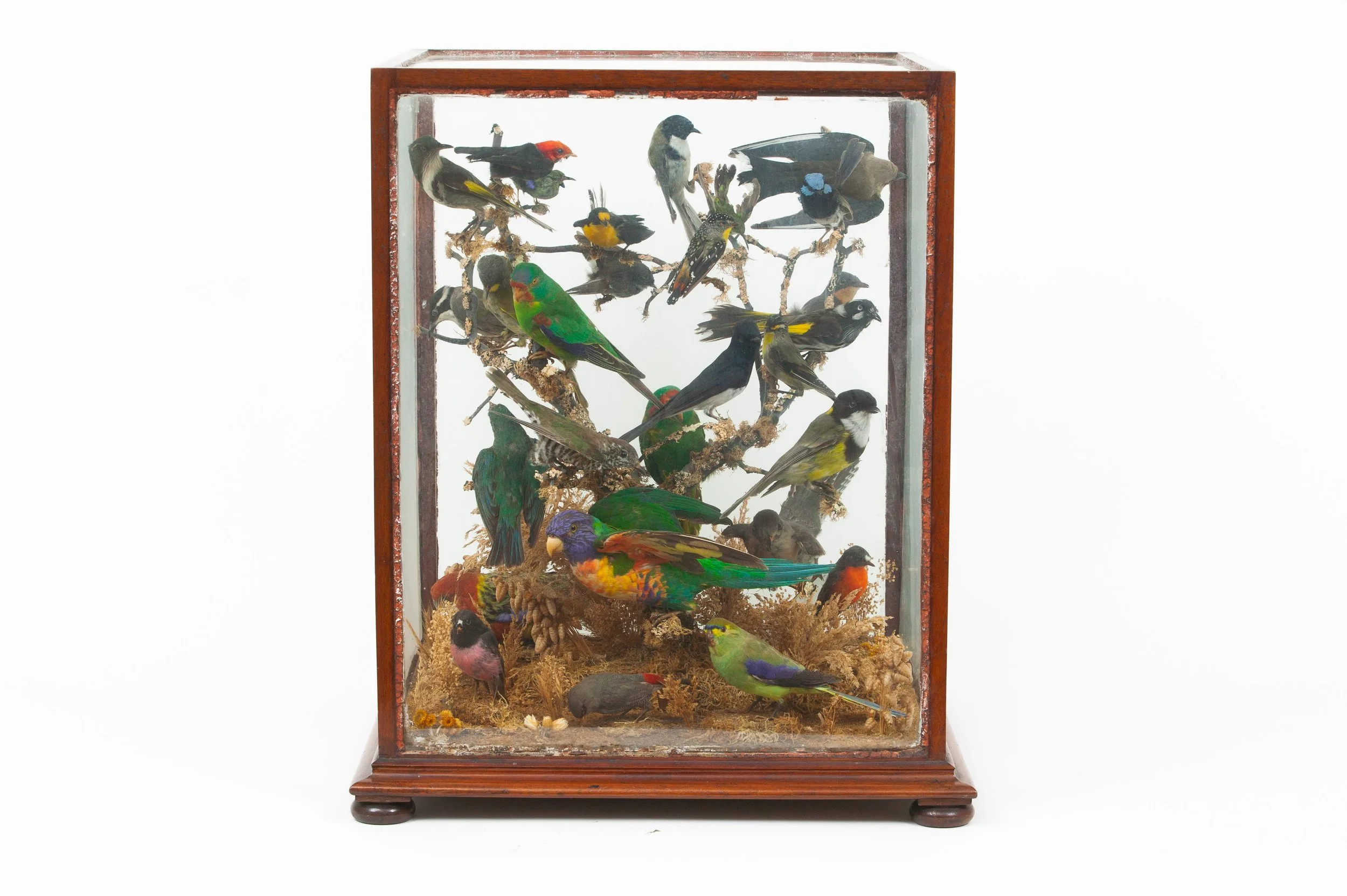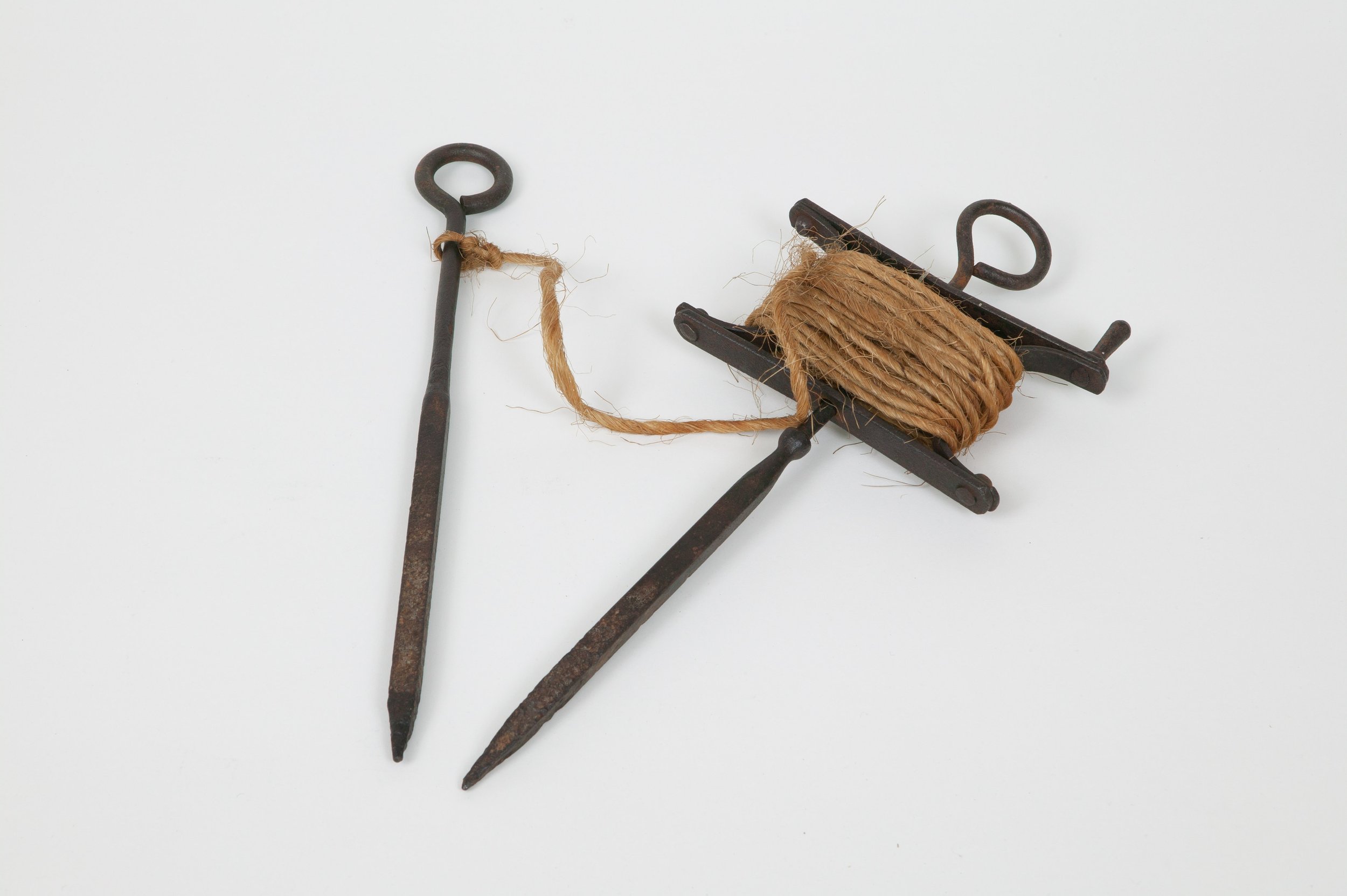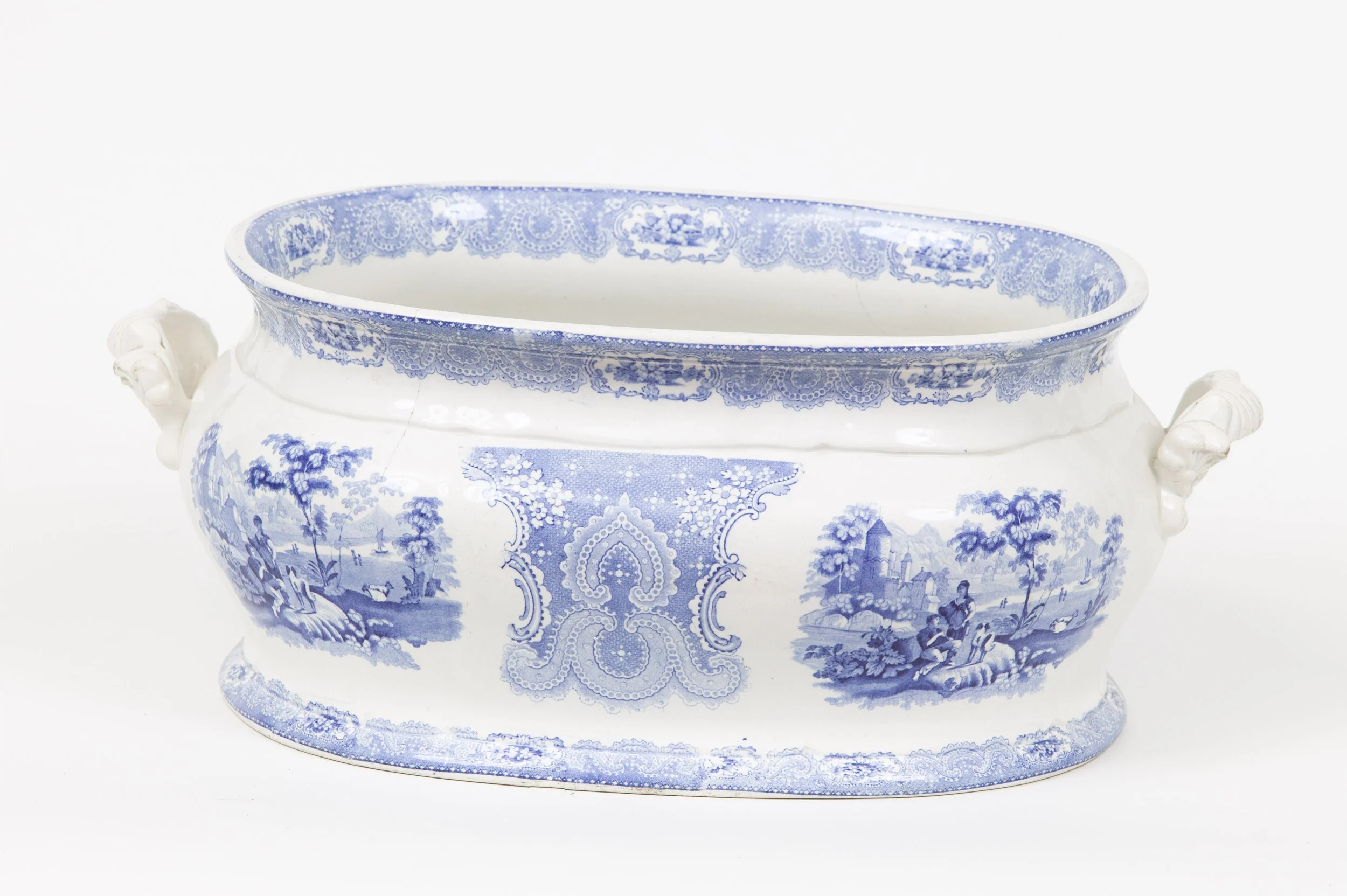NarrynA
Our Collections
School Resources
Narryna’s school education programs explore 19th century technology, relations between ‘family’ and servants and social life in early Hobart. This page illustrates key artefacts examined during Narryna’s schools programs.
Miss Dora Hookey’s doll c1840 (nursery)
Wax over a timber substrate, human hair, glass, later broderie anglaise dress
Miss Dora Hookey’s doll is the oldest doll on display in the Narryna nursery. The split in her forehead relates to wax layer moving at different rate from timber substrate. Narryna’s dolls represent an earlier era’s ideal of beauty and stand in for children in an empty nursery.
Argand Lamp
Argand lamp (dining room and drawing room)
Brass, possibly made in Tasmania c. 1830
Private collection, on loan to Narryna
Nineteenth-century rooms were arranged according to light sources. People sat around the dining or drawing room table because of the central candelabra or lamp. This original Argand lamp burnt whale oil. Whaling was a major industry for Tasmania in the period 1803 to c1860 and underpinned the island’s prosperity. Bees wax candles were also used although the best candles were spermaceti (sperm whale wax). With the advent of petrochemicals, kerosene replaced whale oil as a fuel for lamps. Narryna was electrified c. 1905, 65 years after the Haig family moved in. We don't condone killing of whales today.
Argand Lamp
China trade worktable c1840 (breakfast room)
Timber, papier mâché, paint, ivory and bone
Captain Andrew Haig was involved in the China Trade during the 1820s. Europeans were interested in acquiring goods such as silks, tea and lacquer. Chinese merchants insisted on them purchasing quantities of ‘fancy goods’ such as lacquerware. The scene of pagodas amidst a Chinese landscape made this an exotic gift to a family member who spent much of her time sewing.
China Trade worktable
Terrestrial Globe, early 19th century
This mandatory adornment of a gentleman’s 19th century library belonged to early pioneer, George Meredith, who arrived with a party of other free settlers on the chartered vessel Emerald in March 1821.
Terrestrial and Celestial Globes were also an important teaching aid, particularly to instruct children on the political structure and physical nature of the world and of the heavens above.
Bedsteps and commode c1845 (guest bedroom)
Australian red cedar (Toona ciliata), once at Government House Tasmania, Hobart
Nineteenth-century beds typically had multiple layered mattresses stuffed with straw, horsehair and feathers. The finished height meant that steps were required to get into bed. In houses without internal bathrooms, bedsteps typically incorporated a chamber pot, as useful on cold winter’s nights. Emptying the chamber pot was a job for the convict servants.
Bedsteps and commode
Hot water bottle c1900 (Huon pine bedroom)
Copper
This finely crafted copper hot water bottle is shaped for pressing against the stomach or one side of the body. It was probably provided with a knitted cover. What keeps you warm on a Tasmanian Winter’s night? A heatpack, doona, electric blanket or rubber hot water bottle?
Meat platter and dome c1850 (dining room)
Silver, porcelain
The dining room, with the table laden with silver, was a place where Captain Andrew Haig sought to impress his visitors. The domed meat cover (together with the hot water reservoir under the meat dish) was designed to keep the food warm as it made the journey from the kitchen to the dining room. There was a certain theatricality as the cover was lifted off to reveal the dinner’s main meat dish such as a turkey or leg of lamb.
Mangle c1880
Pine, metal
This small mangle attaches to Narryna’s Huon pine wash troughs and was used to push water out of delicate cottons and silk stockings. If the items were arranged and pushed through flat, it would begin the ironing process.
Copy books c1890
Paper, printed in Tasmania
Good handwriting was regarded as an accomplishment. These copy books are printed with examples of “copperplate” script for students to copy.
Slate and slate pencil
Slate and slate pencil (breakfast room)
Slate is a stone used for the rooves of houses. In the 19th century it was often used for blackboards, both large scale blackboards in schools and small, framed individual blackboards used by students.
Teapoy
Teapoy c1840 (drawing room)
Rosewood, part of Captain and Mrs Haig’s original drawing room suite
The drawing room was the place where the Haig family’s most precious possessions were displayed and where visitors were received – for morning calls, afternoon tea or after dinner. The activities that took place in the room included playing music (piano, violin and singing), needlework and taking tea. Tea was a previous commodity imported from China and kept in the teapoy, a locked box on a stand, away from pilfering convict servants.
Teapoy
Captain Haig’s desk c1820 (dressing room)
Teak with iron and brass handles
Captain Andrew Haig (1793-1871) first sailed into Hobart in 1824 and bought the land on which Narryna stands. At that time he was a merchant based in Kolkata (Calcutta) trading with China through Canton (Guangzhou) for silks, tea and lacquer. Haig’s ship’s desk is an example of campaign furniture which was made to come apart for ease of transport. The desk is configured as two traveling trunks with a secretaire desk in the upper section. The iron handles on the sides allowed two sailors to move the desk from ship to shore and back. In the early 19th century (as now) Hobart was home to people of diverse backgrounds. Captain Haig spoke Hindi and once appeared as a witness for an Indian man in Hobart accused of a crime.
Captain Haig’s Desk
Hip bath (servant’s quarters)
Galvanized iron
Narryna was built without indoor plumbing, which meant that there were originally no indoor baths, basins, sinks or toilets. Servants would set up a bath, when required, in an upstairs bedroom or dressing room. The servants’ stairs are steep and narrow. Imagine how exhausting it would have been to make many journeys up and down the stairs, carrying hot water for the bedroom washstands or chamber pots. The servants never used the main (carpeted) stairs. They only used those leading to the hall if they were serving meals or cleaning the ground floor rooms.
Wash set c1850 (Huon pine bedroom)
Porcelain, transfer-printed with Chinese-inspired (chinoiserie) scenes.
In a house without an internal bathroom, a ewer and basin allowed the occupant of this bedroom to wash their face and upper body. The long-lidded dish held a toothbrush or razor.
Hanging meat safe
Meatsafe c1890
Tinned metal, maker unknown
In the days before refrigeration, meat was stored in meatsafes in coolrooms (cellars or larders) or on verandas where it could be well ventilated. The hanging safe kept meat away from ants.
Whaling Trypot
Trypot c1840
Cast iron, British maker unknown
This large caudron belongs to the age of deep sea whaling in pursuit of the sperm whale (Physeter macrocephalus). Before the advent of the petrochemicals industries around 1860, whale oil was used to lubricate machinery, provide the fuel for domestic and street lighting and was the basis for perfumes, soap and some margarines. Whale flesh was boiled (or rendered) in caudrons like this which were positioned above fires on lead trays on the ship’s deck. The resulting liquid whale oil was then decanted into casks. A fire escaping from the furnace was fatal to operations. Caudrons often found their way to rural properties where they were used to render down sheep at times of drought and agricultural depression.
Embroidery sampler by Frances Seivwright, aged 7, c1835 (nursery)
Cotton and linen, framed
There was little sense of childhood in the early 19th century with girls being regarded as ‘mothers in training’. Embroidery samplers were done by young girls to practice their stitches. Girls helped their mothers to sew garments, the household linen, bed hangings and curtains. Victorian middle-class women generally portrayed themselves as not having to work but their textile work occupied a lot of their time. This was done completely by hand until the sewing machine became readily available c. 1860. Unmarried women were known as spinsters (from spinning wool and other yarn) because their time was involved in sewing for her ‘hope chest’ or dowry, containing the textiles she would bring to a marriage.
Student lamp c1870 (Captain Haig’s dressing room)
Metal with nickel-plated finish
This student lamp has a reflector to magnify the light of the candle flame. The candle is contained in a column fitted with a spring so the flame continues to be visible as the candle wick and wax burns down over the hours.
Collection of stuffed birds c1860 (dining room)
This case of stuffed birds provided a museum collection within the home at a time when there was avid interest in natural science. The bird specimens, arranged in a naturalistic setting, were partly sourced in Tasmania and include the eastern rosella, musk lorikeet, strong-billed honeyeater, swift parrot, yellow-throated honeyeater, grey fantail, black-headed honeyeater, sunbird, fantail cuckoo, satin flycatcher (female), Newholland honeyeater, dashy wood swallow, superb fairy-wren, hummingbird, striated pardalote, satin flycatcher, golden whistler, shining bronze cuckoo, rainbow lorikeet, blue winged parrot, pink robin and flame robin.
Music stand c1840 (drawing room)
Australian red cedar (Toona ciliata), later finish
Attributed to the cabinetmaking workshop of William Hamilton (c. 1796-1885, active in Tasmania 1832-52 and 1857-1878)
This crisply turned music stand has a hinged ‘lectern’ for the music which is supported by a lyre motif, an allusion to Apollo as Greek and Roman God of music.
Stringline winder c1860
Wrought iron
Narryna had large kitchen gardens from the 1830s to the 1940s. Kitchen gardens ensured a ready supply of fresh produce for Narryna’s dining table. A wide variety of vegetables and fruits were grown to ensure supply across the longest possible season and were preserved for eating over the winter months. This stringline winder was used to set the kitchen garden with the vegetables planted in regimented rows
Slipper bath (nursery)
Galvanized iron, painted
This bath is called a slipper bath from its shape which is like a shoe. One end of the bath covered over to stop the water being splashed out by the children or getting too cold too quickly as it does in an open bath. A significant task for the servants was fetching water from the public pump (the Napoleon Fountain at the corner of Montpellier Retreat and Sandy Bay Road), heating water, carrying it up from the kitchen and later emptying the baths and chamber pots. Baths were consequently infrequent (probably once a week) and the bathwater was often shared between several siblings.
Footbath c1830 (Huon pine bedroom)
Porcelain, Bradley Coalport
A footbath provided relief for sore feet after a day of walking in leather-soled shoes or boots. It also helped with conditions such as gout, caused by a build up of compounds in the joints, often resulting from an overly-rich diet.
Footbath
Irons c1880
Iron and steel
Early irons were positioned to absorb heat from the fireplace. Multiples were needed because they cooled quickly, making ironing an onerous task.


